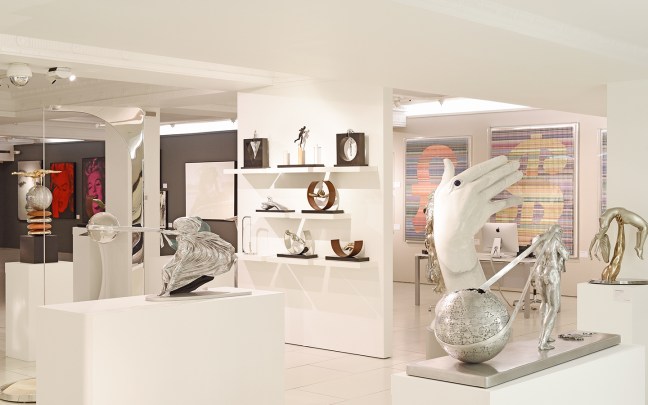Tutti i centri commerciali diventeranno musei, così come tutti i musei diventeranno centri commerciali. Questo è quello che Andy Warhol si immaginava sarebbe successo nel mercato dell’arte.
La sua profezia si è avverata: oggi alcuni centri commerciali in giro per il mondo ospitano installazioni d’arte contemporanea, cosicché i clienti diventino anche spettatori. Mentre si fanno i propri acquisti, si fa anche un’esperienza culturale nuova e gratuita.
Questo accade in alcuni centri commerciali di città come Parigi, Londra, Milano e Pechino. L’arte contemporanea è così largamente diffusa ed esibita da diventare essa stessa protagonista di vetrine.
Nel 2013, Les Galeries Lafayette hanno inaugurato a Parigi un nuovo spazio culturale nel Boulevard Haussmann. Gli artisti realizzano spettacoli a tema che intrattengano il vasto pubblico di passanti. «I grandi negozi dovrebbero raccontare storie, oggi più che mai e offrire esperienze», afferma Guillaume Houzé, il direttore della comunicazione delle Galeries Lafayette.
A Londra, i grandi magazzini di Harrods offrono la possibilità di visitare gratuitamente cinquemila metri della più bella arte contemporanea, esibendo artisti come Warhol, Mirò, Chagall e Picasso.
Anche la città di Milano ha partecipato a questo marketing esperienziale. Nel 2015 il patron dell’Esselunga, Bernardo Caprotti, ha portato un messaggio pubblicitario sotto forma di opera d’arte all’interno della metropolitana della città. In aggiunta, nel 2016 è stato aperto il nuovo centro commerciale Scalo Milano dove diversi artisti contemporanei hanno esposto le loro opere.
Questi sono solo alcuni esempi che mostrano la combinazione odierna tra arte e shopping. È un modo per invitare a comprare l’arte contemporanea? È per ricordare che la compra-vendita di opere permette al mercato dell’arte di continuare a vivere? Sicuramente è un modo per dare più possibilità agli artisti emergenti e alla loro creatività di esibirsi in spazi pubblici. La cultura è sempre più fuori i musei e alla portata di tutti.
—
All department stores will become museums, and all museums will become department stores. This is what Andy Warhol thought about the future outlook for the art market.
His prophecy has come true: today, some shopping centers around the world set up exhibitions and art installations. therefore the clients became visitors as well. While shopping, people get a new, cultural, and free experience.
This is happening in cities such as Paris, London, Milan, and Beijing. Contemporary art, design, and fashion are so widely spread that become the protagonist of the shops’ windows.
In 2013, Les Galeries Lafayette inaugurated in Paris a cultural area in the Boulevard Haussmann. Artists make thematic shows to entertain a large number of . «The big shopping centers should tell stories, today more than ever and offer experiences» said Guillaume Houzé, the director of communication of Les Galeries Lafayette.
In London, the Harrods’ department store gives the possibility to visit free five thousand meters of the best contemporary art, such as pieces by Warhol, Miro, Chagall, and Picasso.
The city of Milan participated in this experiential marketing as well: in 2015, the director of Esselunga, Bernardo Caprotti, created an advertising message that brought art shapes inside the subway of the city. Moreover, in 2016, the new shopping center Scalo Milano was opened, hosting different contemporary artists.
These are only a few examples that show the modern mix of art and shopping. Is this the way to let people buy modern art? Is it the way to remember everyone that the art market is the reason why art is still alive nowadays? Of course, this is the way to give more possibilities to emerging artists and their creativity to show in public spaces. Culture is always more outside museums and for everybody.
Marta C.
© Credit immagini: Pinterest
